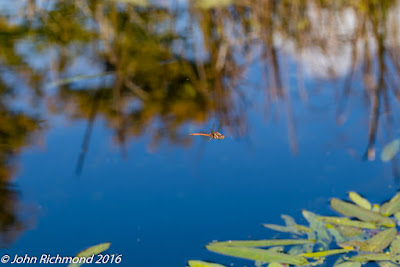Getting used to a new camera body always takes time - and the jump from the 18Mpx 600D/T3i to the 24Mpx 80D is quite a big one. Not so much in terms of final image size but in terms of capabilities. Capabilities I'm still exploring.
24Mpx is straining the now ancient laptop with (calibrated) external monitor I use for image processing. But so did 18Mpx if I did too much in Lightroom. RAW image quality shows improvement in three areas for me. Firstly, the dynamic range is better both at base ISO and higher values. Secondly, the exposure latitude has increased. Thirdly, the noise performance is improved. In practical terms this means that I can recover highlights and lift shadows without my previous camera's rapidly increased noise and odd colour effects even working with slightly higher ISO than I used with the 600D. This shot of the beach and waterfront at Plymouth Hoe is a good example where I've been able to tone down the sky and lift the beach and sea wall shadows while still preserving good noise and dynamic range performance.
 |
| Plymouth Hoe beach and sea defences |
 |
| October 2016 in the Summer Garden at the Garden House |
When I got the 80D I had a choice. Stick with APS-C crop cameras or make the jump to full frame with a just within my budget 6D. My lenses are more oriented towards the crop format but I had enough full frame prime lenses to cover my immediate needs if I made the switch. Oddly enough, what weighed the balance in favour of the crop was not the partial weather proofing, the 45 point autofocus, 7fps, deeper RAW buffer and all the other bells and whistles that the 6D doesn't have. It was the flip out touch screen. Available on the 80D but not on the 6D.
Age is catching up with me. I have no trouble getting down to low, even ground level but getting up again can be a bit of a struggle. I've grown so used to using live view on the flip out screen of the 600D for working at low levels that I knew I couldn't give it up. And shots like this one of Fly Agaric toadstools under a multi stemmed birch vindicate my choice.
 |
| Fly agaric mushrooms under Betula ermanii. 10mm at ground level. |
Of course, once the decision had been made, I've had to try out the extra features of the 80D. This is still a work in progress so it wasn't until today that I decided to try out the higher frame rate, deeper RAW buffer and 45 point tracking autofocus. So, as you do, I tried using the most difficult subject I could think of. One I have never succeeded with before. Dragonflies. In flight. Silly me. Quite a few of them round the lake in the arboretum at The Garden House but none really wanted to cooperate by coming closer and hovering within frame filling reach of the Sigma 105mm OS macro that I had with me. Two bursts of two shots each was the sole result of a quite frustrating 20 minutes.
It was only when I got the shots back into Lightroom that I began to be more impressed. I had the ISO at 400 and aperture at 7.1 to give a speed of 1/800 of a second. Spot metering and centre focal point selected. The two shots below are the entire sequence for this male Common Darter, Sympetrum striolatum.
 |
| Male common darter in flight |
 |
| Male common darter in flight |
Now that's something I can work with. Always providing I can a) get closer or b) get a close focusing longer lens that responds fast enough to capture a rapidly moving insect. My Sigma 180mm macro, good though it is, doesn't autofocus fast enough to keep up. Which means I'll need to look at an alternative. But not till next year. Winter is coming on and bringing it's own set of opportunities. But insects in flight are not one of them.













